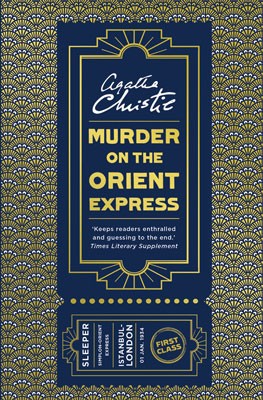Instanbul and train travel with Agatha 'Get Pitted' Christie's 'Murder on the Orient Express'
The Orient Express is a train that takes its travellers from Istanbul, Turkey, to Calais, France – a journey that not only represents great distance but also great cultural change and transformation. Despite the opening scene occurring in Syria, the beginning of our journey starts in Istanbul, or Stamboul as it is referred to in the pre-WWII 1934 novel. The city of Istanbul is arguably the most significant city in our world’s history, and today straddles the Bosphorous Strait and, thus, the continents of Europe and Asia. It is literally a bridge between the East and the West.
When you arrive in Istanbul this unique culture of people and place is immediately apparent. You can see both the European and Middle Eastern influences at play in the architecture, food and people. The popular area of Sultan Ahmet, on the European side, is home to the ancient Hippodrome of Constantinople (Istanbul’s name during the Roman Empire) and also the historically beautiful Hagia Sophia, both situated only minutes away from each other. Hagia Sophia, now a museum, has lived the life of both a church and a mosque since its first heroic construction almost 1,500 years ago. There is something special about this city and its people, it oozes and drips stories like the honey that runs down your chin as you bite into your baklava. The city’s history is so epic that after visiting for the first time, I thought that the ideal situation would be to focus on one lineage of the city’s history during each visit – the Ottoman Empire, the Byzantium Empire, the Roman Empire – as, lucky for us, the Turkish people have carefully preserved the monuments, artefacts and historical beauty. Or, alternatively, find yourself a local tour guide who will be able to dissect and explain the city’s many stories to you in a way that enables absorption into the mind.
Agatha Christie, the Queen of murder mystery, captures this cultural cross-section with her 14 train passengers. As M. Bouc, the train company owner, comments, “All around us are people, of all classes, of all nationalities, of all ages. For three days these people, these strangers to one another, are brought together. They sleep and eat under one roof, they cannot get away from each other. At the end of three days they part, they go their several ways, never, perhaps, to see each other again.” Having visited Istanbul during a whirlwind travel across Europe, I immediately felt a sense of mutual understanding with Mr Bouc’s observation – when you travel across the world, you meet people from all walks of life. You become close confidants with the people sharing your hostel room, and then farewell them days later to never speak to them again. Visiting this city opens you up to a whole new melting pot of people from cultures and places you would not meet elsewhere.
You exchange stories of adventure and where the best place is to buy Baklava in the Grand Bazaar, but days later realise that you don’t know their last name or why they were travelling in Istanbul. Our great detective Hercule Poirot, and his curled “moustaches” moves past these superficial conversations to reveal each passenger’s history and personal story. This is definitely one of the elements of Christie’s writing that creates such a captivating and enjoyable novel.
This classic story is so easy to swallow in one sitting – perfect for a long train ride, dare I say.
So throw your shakkas to the wind and embark on a journey with history's greatest crime writer and one of Britain's first female surfers*. Were she alive today she would no doubt be writing poetry across the face of waves with Steph Gilmore.
- by Jules Curry
*Yes, Agatha Christie was one of Britain’s first “stand-up” surfers, see below!
https://www.theguardian.com/books/2011/jul/29/agatha-christie-hercule-poirot-surfing-secret
http://www.huffingtonpost.com.au/2016/03/17/agatha-christie-surfing_n_9481218.html

